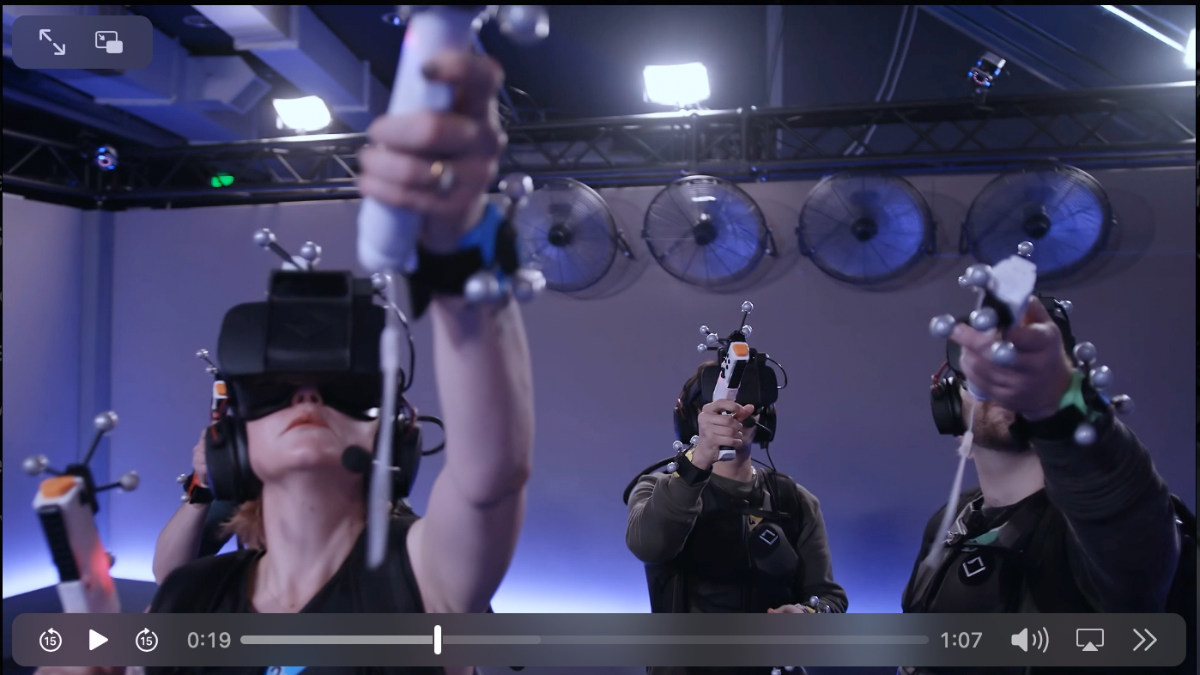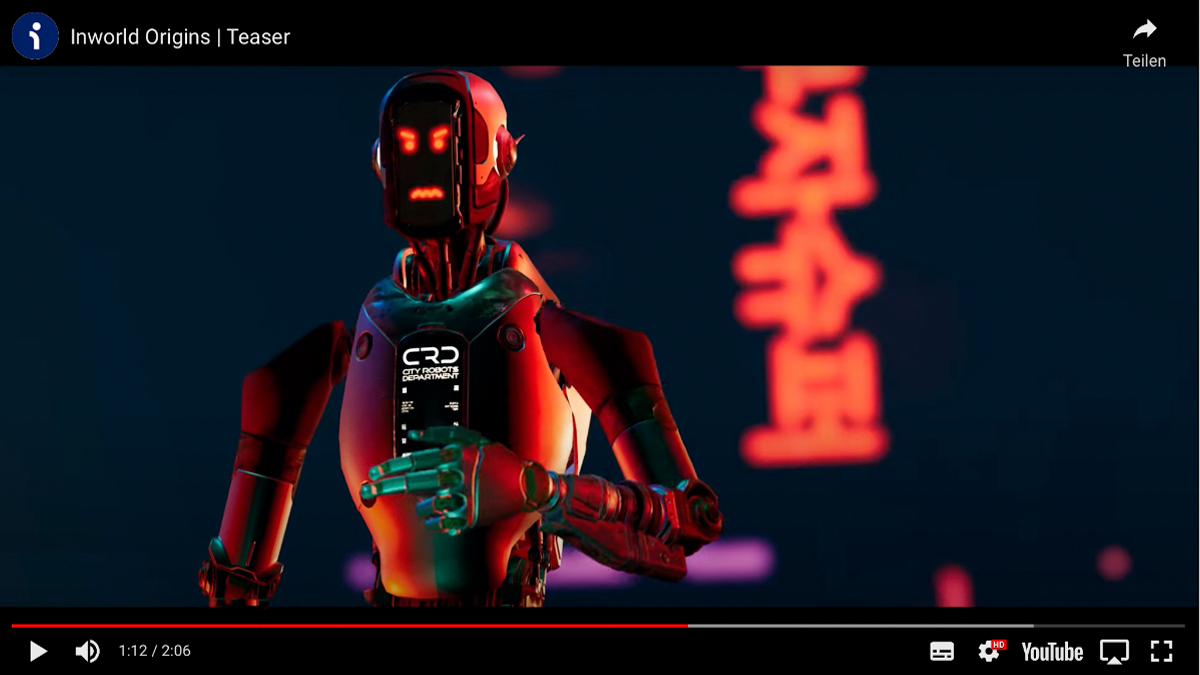Constructing the Metaverse: Practical Applications in Reality
- 7 minutes read - 1328 words
Table of Contents
The definition of the Metaverse is evolving faster than the technological capabilities. You could get the idea that the Metaverse is NFT+Games, and that „play to earn“ is the future of entertainment. Like during any gold rush, the focus is more on fast returns. Instead, it makes sense to understand use cases that could improve productivity.
Extended reality and the Metaverse
Extended reality (XR) - also known as the Metaverse - is emerging from the pandemic as one of the hottest areas in tech. Virtual reality (VR) and augmented reality (AR) tech are helping companies innovate just about every industry as investors pour record funding into the so-called “metaverse.“
Extended reality is met with some skepticism, resulting from it being close to NFTs and cryptocurrencies, which were received with euphoria. It is also not the first time Virtual Reality has been seen as the new Future. In Science Fiction, the idea dates back to at least the early 1980ties (Tron, Cyberspace).
In 2021 VCs invested $4B in extended reality technology to build the Metaverse. Some of the biggest companies in the world are investing in new virtual worlds, too. A recent McKinsey report predicted the metaverse would produce $5T in economic impact by 2030.
Working from home is a development driven by the Corona pandemic. Working from home is part of digitalization; to some extent, it is also about virtualization.
Virtual Worlds have existed since at least the late 1990ties, and millions of people were or are living in Virtual worlds. As a result, XR catapulted into the public consciousness. Today, 78% of Americans are familiar with virtual reality, up from 45% in 2015.
Technology context
From a high-level perspective, XR is part of the digital transformation. As such, it is driven by computing power and data intelligence. Another co-trend is coming from machine learning, which only left its “AI winter” because the compute power and storage became cheaper. Photorealistic worlds not only need mighty graphical add power, but it also needs a lot of memory and space.
The evolution of computing power also drives the ability to use more powerful telecommunication protocols and radio baseband chips. NFTs based on intelligent contracts demonstrate how ownership of assets can be organized globally. This explains why “this time,“ Virtual Reality has a higher chance of survival.
Will it only is about gaming?
So far, we have seen smart contracts and NFTs. The NFT Creator Economy is suitable for artists and art collectors, but it is not enough to explain a " $5T in economic impact by 2030”. There are a lot of gaming platforms that rely on FOMO by using their coins to sell virtual assets.
The transactional character of these platforms might be short-sighted. NFTs art trading platforms are suffering from copycat content, but some artists are doing well by selling unique and authentic art. Some NFTs are collectible Kitsch with little to no cultural value other than telling a story of greed.
Business Models and Use Cases
It seems likely that XR will become part of our everyday lives in the coming years, whether through virtual job training or VR therapy for people with PTSD.
Lumeto is developing Involve XR, a virtual reality (VR) learning and evaluation platform, as part of its work in the field of virtual reality (VR) training. This platform will enable public health and safety institutions to instruct and evaluate the abilities of their employees.
Involve XR
Involve XR by Lumeto provides a secure and low-cost learning virtual environment that professionals in vital roles, such as doctors and first responders, can use to practice real-world scenarios in a controlled environment.
Institutions interested in deploying data-driven, enterprise-grade, immersive training and assessment across the healthcare and public safety sectors can take advantage of Involve XR, an open and flexible learning and assessment platform.
Involve XR provides exceptional flexibility and the ability to customize experiences without requiring users to write any code. Additionally, it connects seamlessly to enterprise data and learning management systems.
The platform may be deployed in training centers and directly to remote workers at home or in the field with low-cost hardware or via flat displays. It functions as a multi-user synchronous training and evaluation tool and an asynchronous learning and practice platform. In the end, it helps to improve labor productivity.
Sandbox VR

The virtual reality (VR) experience known as Sandbox may accommodate as many as six individuals at the same time. Users can see and physically engage with one another in the same manner as they would in the outside world when in the Sandbox environment.
Exclusive virtual reality worlds are based on content from various sources, such as “Star Trek: Discovery.” The Holodeck showed in “Star Trek: The Next Generation” served as an inspiration for the creation of Sandbox VR.
These XR worlds, built and designed by professionals from EA, Sony, and Ubisoft, will give you the sensation that you are actually living inside a video game or movie.
Sandbox VR is working to address two issues: the constraints imposed by hardware and the lack of an option for shared experiences. In MMORPGs like World of Warcraft, group experiences are restricted by speech and proximity to other players.
You can use voice chats, but they are not the same as speech communication. Natural speech communication has lower latency, doesn’t have lags, and gives hints about where the people involved are about each other.
Vantage Point
Vantage Point brings cost-effective, easy-to-manage Virtual Reality training to remote teams. This is partly due to work-from-home situations.
Soft Skills are taught poorly in DEI programs. Being less effective reduces potential liabilities. Employees struggle to understand the issue’s complexity.
DEI programs help firms avoid compliance and ethical/legal issues. Successful DEI programs focus on individuals. DEI programs rely on motivation.
VR lessons help students understand biases and misunderstood situations. Prevent unfair treatment and prejudice, reduce liability, and improve your bottom line.
Today’s programs are mostly still graphics, text, or video. Tone, body language, closeness, and other contextual details are missing. Virtual reality (VR) immerses users in realistic training using gaze, style, and photo-realistic characters. We included game theory, positive and negative reinforcement, and psychology into the characters’ interactions to create a realistic training program.
Inworld AI

Inworld AI is about improving the production process of the virtual world. Characters in video games and other digital experiences typically rely on pre-written lines and responses. Creating massive virtual worlds necessitates an enormous amount of dialogue content and backstory. Inworld tries to solve this problem using Artificial Intelligence.
Virtual Worlds typically employ meticulously crafted scripts. AI makes it possible to have an honest conversation with an NPC / 3d avatar about the world, her family, local issues, and equipment and receive intelligent, meaningful responses.
When given a short prompt, generative AIs like GPT-3 extrapolate from it based on their training with static language datasets. So a conversation may develop into a lengthy story. Additionally, utilizing NLP, Inworld focuses on how a character should behave based on context.
Inworld enables the creation of NPCs and similar characters with just a few sentences of description and a few turns of a dial; once created, these characters are instantly more complex and engaging to interact with than standard scripted characters.
Building a character is significantly more straightforward than the traditional method of establishing networks of dialogue and story triggers - without the use of code.


